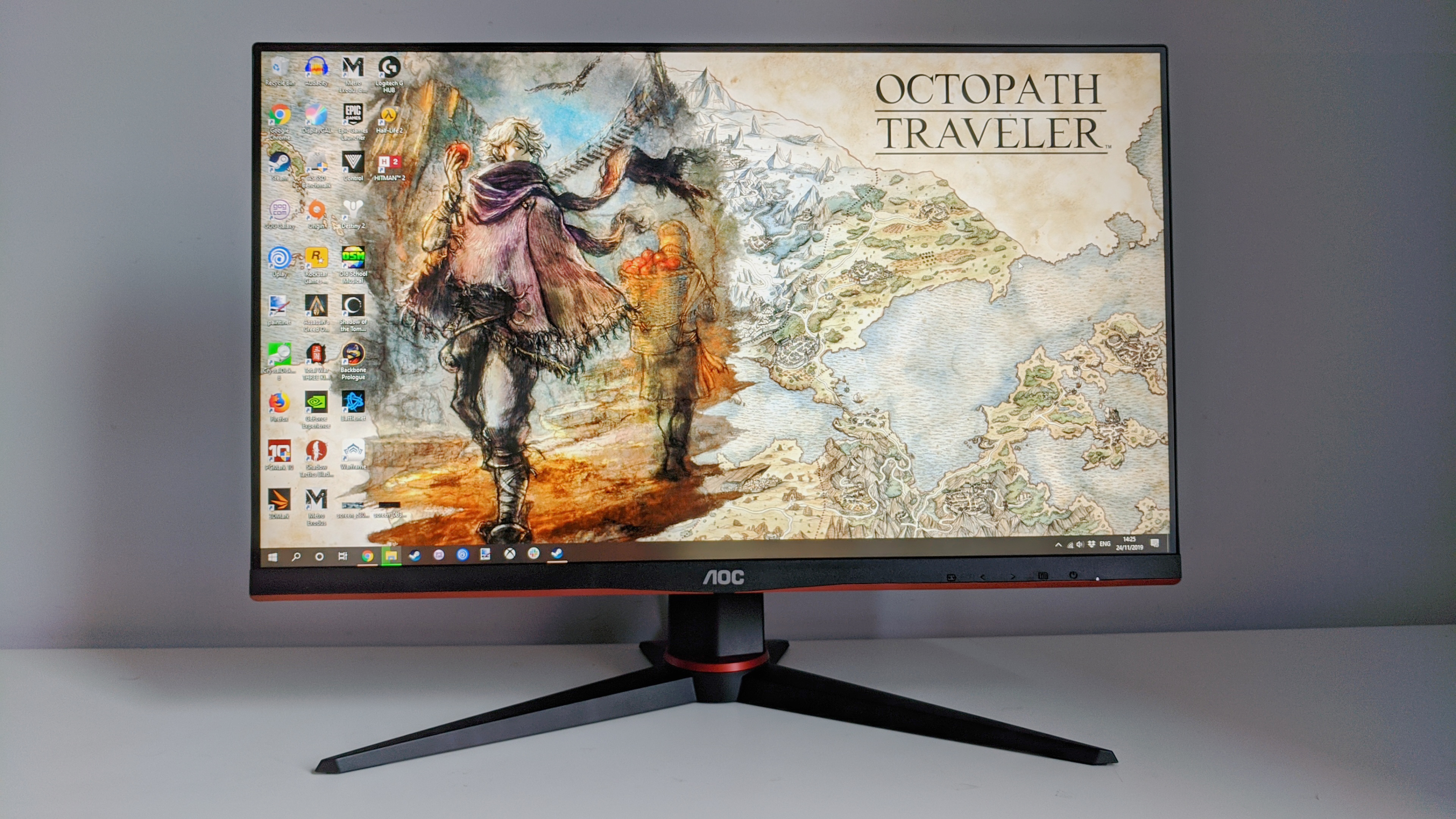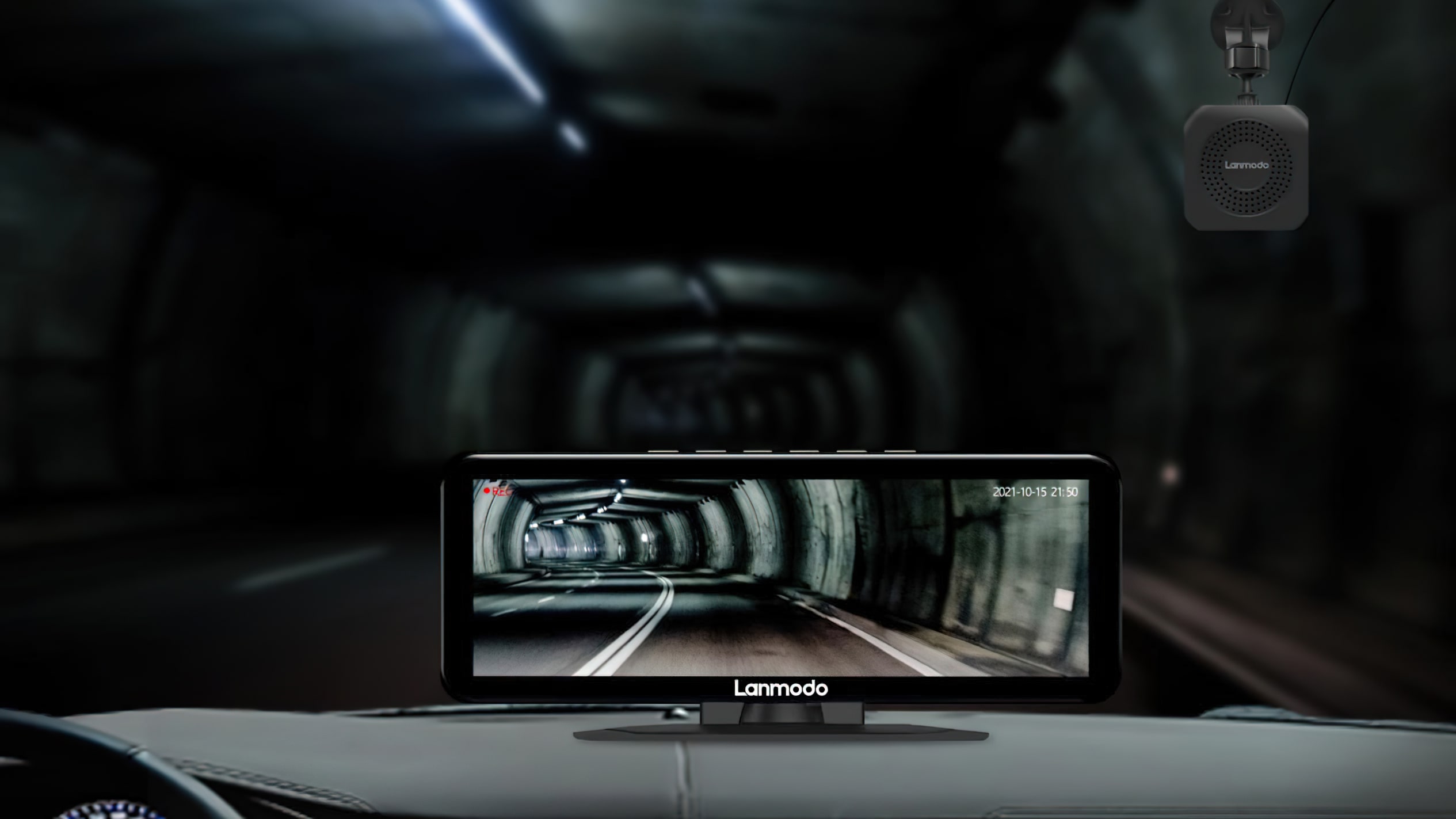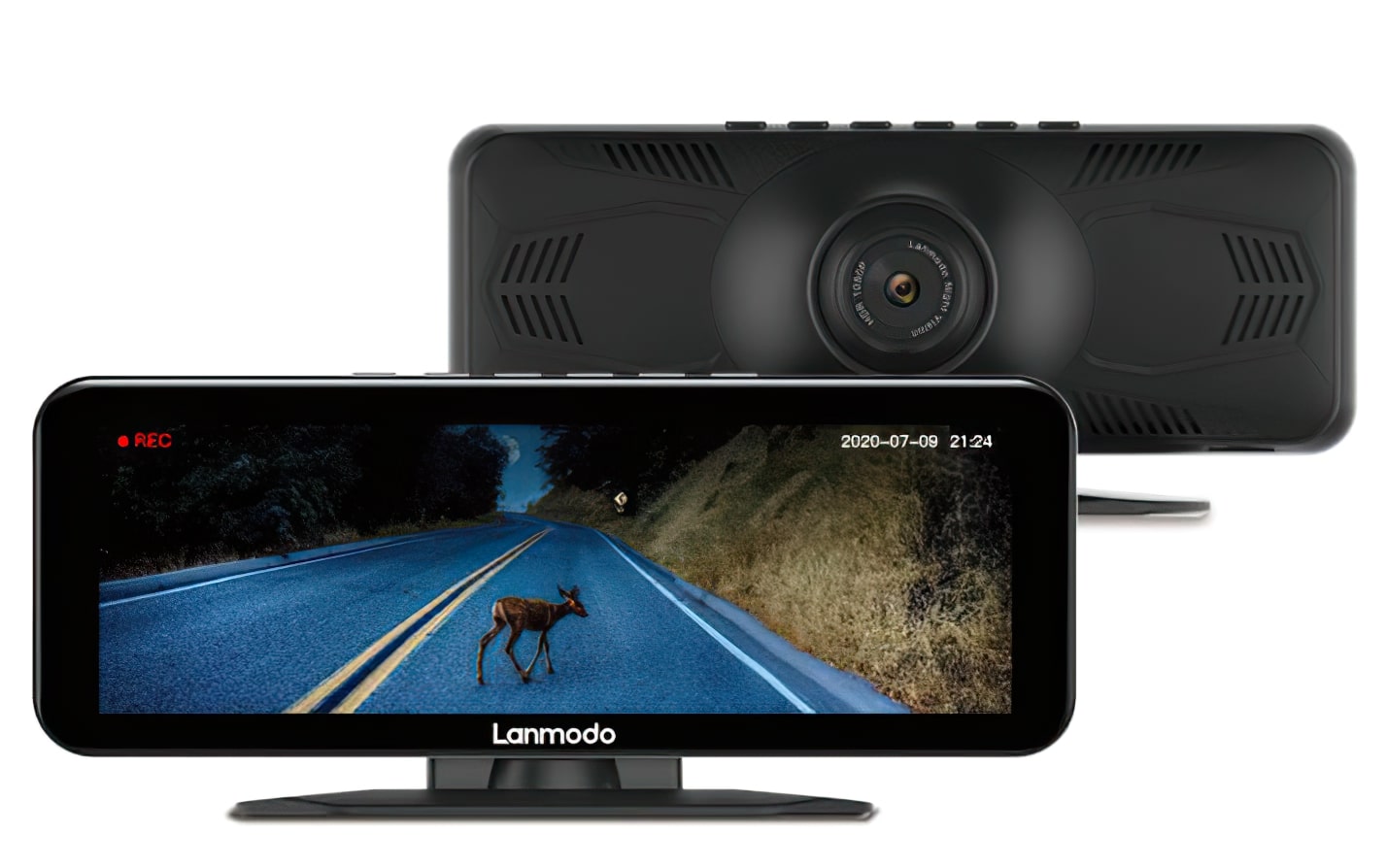
AOC’s C24G1 is a wonderful gaming monitor for these on a funds, however for these of you preferring flat screens versus curved ones, then the AOC 24G2U is certainly the monitor for you. This 24in, 1920×1080, 144Hz, AMD FreeSync display screen shares most of the identical specs because the C24G1, however comes with a flat, much more correct IPS panel as a substitute of a curved VA one. It’s a fraction dearer, going for £180 within the UK at time of writing in comparison with the C24G1’s standard worth of round £173 (for some motive it’s unusually unavailable to purchase wherever within the US proper now, however I’d think about it would most likely be greater than the $145 asking worth of the C24G1 if its UK pricing is something to go by), however for the curve-averse, it actually doesn’t get significantly better than the 24G2U.
The smartest thing concerning the AOC 24G2U is that’s doesn’t require any extra menu settings fiddling to get one of the best from it. You can simply use it straight out of the field on its default settings (Standard eco mode, Warm color temperature) and get the very best image high quality right away. Indeed, once I tried tweaking its onboard menu settings to see if I might enhance its color accuracy, my X-Rite Display i1 Pro software truly got here again with worse outcomes than what I’d measured on its out of the field settings.
Admittedly, an sRGB color gamut protection of 99.6% on stated default settings was all the time going to be a tricky act to beat, however once I converted to the 24G2U’s User color temperature profile and adjusted its RGB values in response to my testing software program, my i1 Pro solely got here again with an sRGB protection of 90.2%. As such, I’d advocate leaving the 24G2U nicely alone within the color settings division, as its default setup is just about excellent already.
I used to be additionally impressed to see a extremely excessive DCI-P3 color gamut protection as nicely. This is the gamut that’s usually used to measure HDR-grade shows, and a variety of one of the best HDR screens on the market should show not less than 90% of this explicit gamut to earn their respective VESA DisplayHDR badges and the like. The 24G2U isn’t an HDR gaming monitor, however the truth that it may possibly show 87.2% of the DCI-P3 color gamut out of the field is one other testomony to the standard of this explicit panel. Heck, I’ve seen loads of HDR gaming screens that don’t come wherever close to that sort of determine, so to see these sort of wealthy, vibrant colors on a non-HDR, sub-£200 show is uncommon.
The 24G2U does have an “HDR Effect” setting in its onboard menu, however this isn’t true HDR. Indeed, games don’t recognise it as an HDR monitor when HDR Effect is enabled, and all it actually does it crank up the monitor’s sharpness settings and saturation ranges, leading to a very pixelated look that’s a lot harsher on the attention. It additionally locks off the monitor’s distinction, color and eco mode settings, making it tough to regulate so as to attempt to enhance it. Instead, I’d advocate leaving it switched off, as I reckon the monitor does a fairly good job of delivering HDR-esque colors anyway with out resorting to a particular mode.

The solely actual niggle I’ve with the 24G2U is the bizarre form of its menu buttons. They’re very low profile, and could be tough to press appropriately if you’re navigating the settings menu.
On prime of its sensible color accuracy, I additionally recorded a superb distinction ratio of 1490:1 on the 24G2U’s default settings, which offered loads of shadow element in darker game scenes, in addition to a extremely respectable black stage of 0.24cd/m2 (the nearer to 0.00cd/m2, the higher) on its most brightness setting. This resulted in beautiful, inky blacks, and gave these aforementioned darkish scenes an awesome sense of depth to them, even when the monitor was pelting out a peak brightness of 370cd/m2.
That brightness determine isn’t as excessive as different another gaming screens on the market, but it surely’s much more than what the AOC C24G1’s VA panel can handle, which peaked at simply 250cd/m2. Not that you just’ll want wherever close to that sort of brightness for on a regular basis use, thoughts, as you’ll seemingly give your self a headache even when you’ve enabled its varied blue gentle filter settings. Still, it’s useful to have in case you occur to catch a ray of sunshine by means of your window, for instance, and wish that additional little bit of visibility to see what you’re doing. For gaming and day by day desktop duties, I tended to have the brightness set a lot decrease, however colors nonetheless seemed wealthy and vibrant regardless.

The 24G2U comes with a great deal of ports, together with two HDMI 1.Four inputs, one DisplayPort 1.2 enter, one VGA, a headphone jack and an audio line in.
The 24G2U additionally goes one step additional than the C24G1 in terms of ports and inputs, too. You nonetheless get the identical variety of HDMI and DisplayPort connections because the C24G1, however the 24G2U has the all vital addition of a 4-port USB3 hub, permitting you to hook up all of your different peripherals comparable to your mouse, keyboard and USB headset in addition to cost your telephone. For me, that alone makes it well worth the teensy bit of additional expense over the C24G1, which doesn’t include any USB ports in any way.
As for its chops as a gaming display screen, the 24G2U’s IPS panel was in a position to preserve tempo with each game I threw at it throughout my testing, and I didn’t see any sort of smearing or blurriness that may typically happen on IPS panels that don’t have very fast response occasions. Plus, whereas the 24G2U isn’t presently one in every of Nvidia’s formally sanctioned G-Sync Compatible monitors simply but, I used to be in a position to make use of its variable refresh fee AMD FreeSync tech completely effective when related to an Nvidia graphics card.

It additionally has 4 USB3 ports tucked away on the again, giving it extra performance than the C24G1.
I didn’t see any indicators of blinking, pulsing or different unusual brightness defects that may typically happen on FreeSync screens that fail Nvidia’s G-Sync Compatible take a look at, and I didn’t see any proof of display screen tearing occurring once I was enjoying fast-paced games comparable to Doom and Warframe at excessive body charges, both. As such, Nvidia graphics card homeowners ought to have the ability to get simply as a lot out of the 24G2U as these with AMD playing cards – though I ought to be aware its FreeSync assist will solely kick in if the body fee is above 48fps on this explicit display screen (the identical because the C24G1), so you should still see some display screen tearing if games are operating under that. This is the case with all G-Sync Compatible screens, although (all of which perform inside their unique FreeSync ranges), so if you wish to ensure of getting that clean, tear-free gaming expertise no matter how briskly your game’s operating, then you definitely’ll must shell out for a dearer full-fat G-Sync display screen.
Still, for many who’d reasonably not pay virtually double the cash on a correct G-Sync monitor just like the 180Hz Acer Predator XB241H or Dell’s 240Hz Alienware AW2518H, then the AOC 24G2U is by far and away the following best choice. Its picture high quality is head and shoulders above different funds screens I’ve examined within the 24in 1920×1080 class, and it will get an additional thumbs up since you don’t need to spend ages faffing round within the settings menu to get it good, both. Likewise, the mix of its excessive refresh fee, height-adjustable stand and plentiful provide of ports give it a great deal of flexibility, and the addition of a USB hub offers it the one factor the curved C24G1 was actually missing – all with out breaking the £200 barrier as nicely.
The AOC C24G1 continues to be an awesome funds gaming monitor in its personal proper – particularly if you need that elegant curve – however when it comes to total worth for cash, the 24G2U offers you extra performance and a greater, extra correct panel for just about the identical sum of money. The C24G1 had an excellent innings on my best gaming monitor checklist, however now one of the best funds FreeSync spot belongs to its flat, 24G2U sibling.




